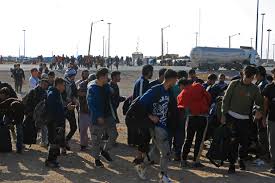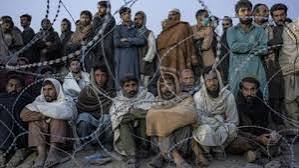Taliban violence inside Afghanistan and the chaotic situation of immigrants abroad
The violence of the Taliban inside Afghanistan and the chaotic situation of Afghan immigrants abroad are two serious and complex issues that have a wide impact on the people of Afghanistan.
Taliban violence inside Afghanistan
After taking control of Afghanistan, the Taliban implemented a series of policies and actions that included severe restrictions against individual freedoms, especially the rights of women and girls, suppression of the opposition, and violence against ethnic and religious minorities. Some cases of violence include:
Arbitrary executions and massive arrests of critics and opponents.
Severe restrictions on women, such as the ban on education and employment in various sectors.
Suppressing popular protests by using force and creating an atmosphere of fear.
Economic disorder and poverty, which has resulted in increased social violence.
Unsettled situation of Afghan immigrants abroad
With increasing violence and restrictions, thousands of Afghans have been forced to leave the country. But in host countries, they often face serious problems, including:
Uncertain legal status: Many immigrants do not have legal documents or refugee status and face the risk of deportation.
Poor living conditions: Many migrants live in overcrowded camps or without basic facilities.
Discrimination and inhuman treatment: Afghans face discrimination and mistreatment in some countries.
Economic problems: due to work restrictions, many immigrants are unable to support their living expenses.
Consequences
Loss of Afghanistan’s human capital: Many skilled and educated Afghans have left the country.
Humanitarian crisis: Migrants often face difficult conditions without proper support.
Increasing tensions in the host countries: the arrival of a large number of immigrants in some countries has caused negative social and political reactions.
If you have a specific item in mind in this regard, I will be happy to explain further.
Afghanistan’s security challenges under Taliban rule
Afghanistan’s security challenges under Taliban rule in 2022 were one of the most important issues in this country. After taking control of Afghanistan in August 2021, the Taliban faced several problems in the field of internal and external security. These challenges can be categorized as follows:
-
Activity of opposition armed groups
ISIS Khorasan (ISIS-K):
ISIS Khorasan emerged as one of the biggest security threats to the Taliban in 2022. The group carried out numerous attacks in major cities including Kabul, Mazar-e-Sharif and Kunduz, where their main targets were civilians, religious minorities (such as Hazaras and Shiites) and even Taliban forces.
Other armed groups:
Some national resistance groups such as the “National Resistance Front” (NRF) were also fighting against the Taliban scattered in the northern provinces, especially Panjshir, Badakhshan and Takhar. -
Increasing ethnic and religious conflicts
By adopting unilateral policies and concentrating power in the hands of a particular ethnic group, the Taliban intensified ethnic tensions. This issue led to a gap between different ethnic groups and mistrust of the Taliban government.
Suppression of religious minorities such as Hazara Shiites and violent actions against them was one of the main causes of instability in some areas. -
Economic insecurity and its consequences
The economic crisis that began after the cutoff of foreign aid and the freezing of Afghan assets aggravated social insecurity.
Increased poverty and unemployment led to the growth of criminal activities and local riots. -
The presence of foreign terrorist groups
The Taliban could not sever their ties with terrorist groups such as Al-Qaeda. This issue was not only a threat to Afghanistan’s internal security, but also caused concern to regional countries and the international community.
Pakistan also complained many times about the activities of the Tehreek-e-Taliban Pakistan (TTP) group in Afghanistan and this issue fueled the border tensions between the two countries. -
Border tensions
In 2022, Afghanistan witnessed frequent border conflicts with neighboring countries, especially Pakistan and Iran. These conflicts occurred mainly due to disputes over border crossings, drug trafficking, and the activities of armed groups. -
Lack of ability of Taliban in security management
The Taliban, despite dominating large parts of the country, lacked a professional and structured security system. Many former security forces had either fled the country or joined the resistance forces.
Lack of sufficient training and internal differences among Taliban members also fueled internal instability.

